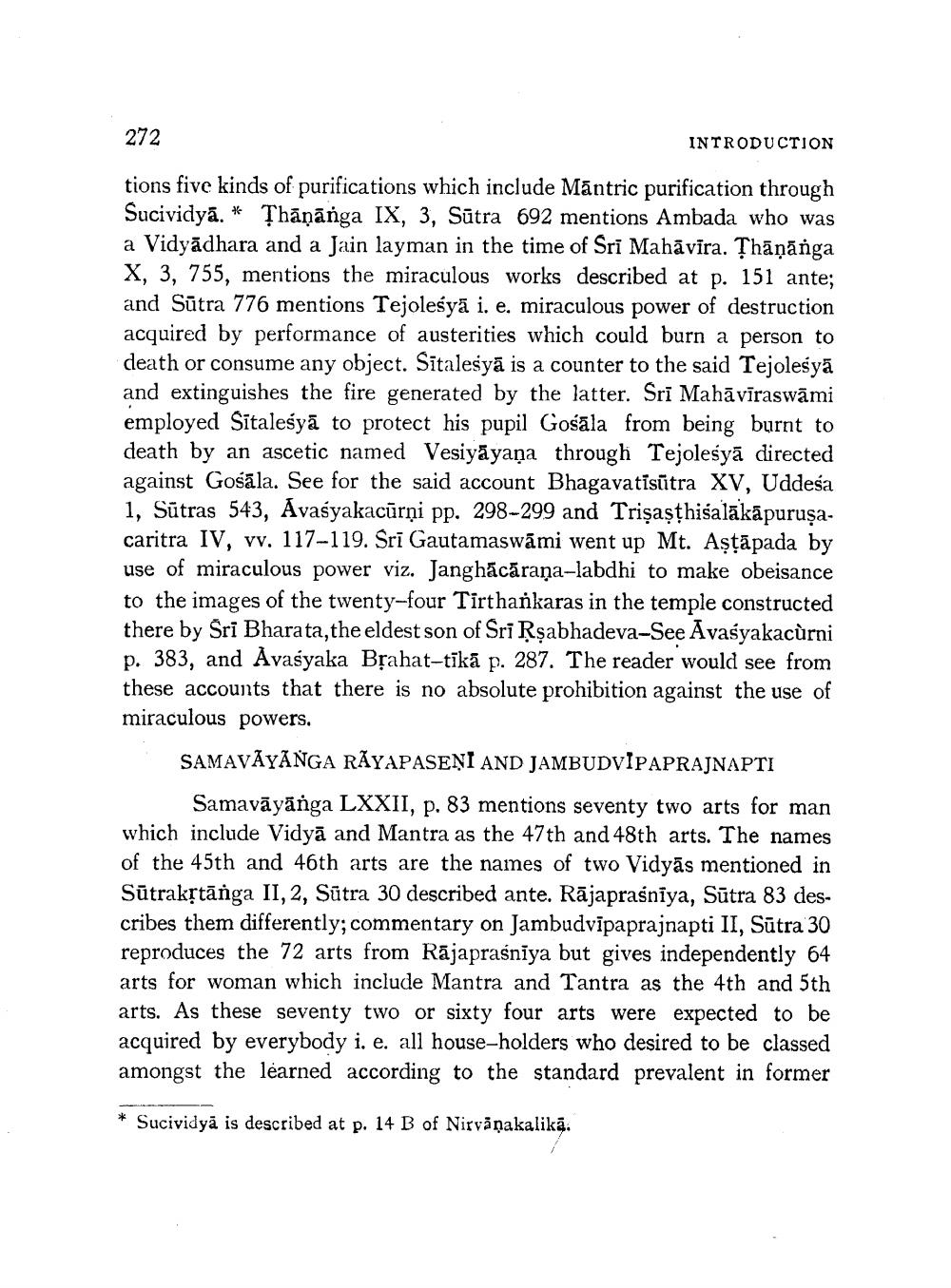________________
272
INTRODUCTION
tions five kinds of purifications which include Mantric purification through Sucividyā. * Thāṇānga IX, 3, Sūtra 692 mentions Ambada who was a Vidyādhara and a Jain layman in the time of Sri Mahāvīra. Thāņānga X, 3, 755, mentions the miraculous works described at p. 151 ante; and Sūtra 776 mentions Tejolesyā i. e. miraculous power of destruction acquired by performance of austerities which could burn a person to death or consume any object. Sitalesyā is a counter to the said Tejolesyā and extinguishes the fire generated by the latter. Sri Mahāvīraswāmi employed Sitaleśyā to protect his pupil Gośāla from being burnt to death by an ascetic named Vesiyāyaṇa through Tejolesyā directed against Gosāla. See for the said account Bhagavatīsūtra XV, Uddesa 1, Sūtras 543, Avaśyakacūrņi pp. 298-299 and Trişaşthisalākāpurusacaritra IV, vv. 117-119. Sri Gautamaswāmi went up Mt. Așțāpada by use of miraculous power viz. Janghācāraņa-labdhi to make obeisance to the images of the twenty-four Tirthankaras in the temple constructed there by Sri Bharata,the eldest son of Sri Rşabhadeva-See Avasyakacùrni p. 383, and Avasyaka Brahat-tīkā p. 287. The reader would see from these accounts that there is no absolute prohibition against the use of miraculous powers.
SAMAVĀYANGA RÃYAPASEŅI AND JAMBUDVIPAPRAJNAPTI
Samavāyānga LXXII, p. 83 mentions seventy two arts for man which include Vidyā and Mantra as the 47th and 48th arts. The names of the 45th and 46th arts are the names of two Vidyās mentioned in Sūtrakstānga II, 2, Sūtra 30 described ante. Rājapraśniya, Sūtra 83 describes them differently; commentary on Jambudvīpaprajnapti II, Sūtra 30 reproduces the 72 arts from Rājapraśniya but gives independently 64 arts for woman which include Mantra and Tantra as the 4th and 5th arts. As these seventy two or sixty four arts were expected to be acquired by everybody i. e, all house-holders who desired to be classed amongst the learned according to the standard prevalent in former
* Sucividyā is described at p. 14 B of Nirväņakalika.




